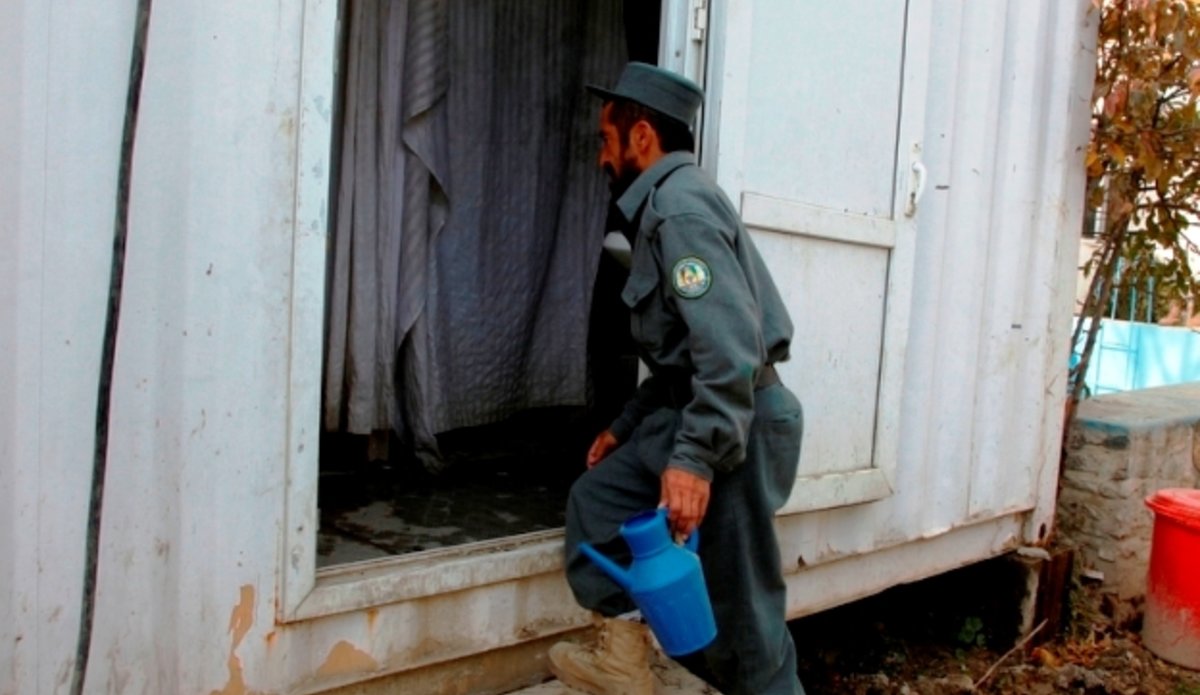On World Toilet Day, UN chief highlights importance of sanitation for health and environment
KABUL - Highlighting serious health consequences due to the lack of access to hygienic sanitation facilities for billions of people around the world, United Nations Secretary-General Ban Ki-moon today called for placing sanitation at the heart of the international community’s post-2015 development activities.
“Despite the compelling moral and economic case for action on sanitation, progress has been too little and too slow,” said Mr. Ban, in his message for the first ever UN-designated World Toilet Day, marked today. “We must urgently step up our efforts, with all actors working together for rapid, tangible results.”
The UN General Assembly designated 19 November as World Toilet Day in July this year, spotlighting a sometimes overlooked but urgent public health issue in many parts of the world, including Afghanistan – the lack of access to hygienic sanitation facilities.
World Toilet Day has previously been marked by international and civil society organizations all over the world. However, it was not formally recognized as an official UN day until 24 July with a resolution passed by the Assembly.
Access to sanitation has been recognized by the UN as a human right, a basic service required to live a normal life. Also, according to the world body, hygienic sanitation facilities are central to human and environmental health.
Worldwide, some 2.5 billion people– or half the population in the developing world – lack the benefits of adequate sanitation. More than one billion people practice open defecation.
Children under five are the most vulnerable to poor hygiene and inadequate sanitation, two of the major causes of diarrhea. Each year, more than 800,000 children under the age of five die from diarrhea – equivalent to more than one child a minute. Countless others fall seriously ill, with many suffering long-term health and developmental consequences. Poor sanitation and hygiene are the primary cause.
The scale of the problem of sanitation in Afghanistan is stark. According to the UN Children’s Fund (UNICEF), preventable diseases like diarrhea and dysentery kill around 85,000 people per year. About 25 per cent of children under five are affected each year by diseases stemming from poor or bad sanitation.
However, there has been some progress. UNICEF statistics show that by the end of 2011, 37 per cent of Afghans had access to adequate sanitation facilities, up from 34 per cent in 2007. The change has been pronounced throughout the country. Whereas in 2007 only 49 per cent of city-dwellers had access to safe sanitation facilities, four years later that number was 60 per cent. During the same time period, in rural areas, the number inched upwards from 29 to 30 per cent.
In the rapidly urbanizing Afghan capital, Kabul, which has only 25 public toilets for its over three million people, Mayor Mohammad Yunus Nawandish has called on the private sector to construct more public toilets.
“My message to the people of Kabul is to fully abide by the principles of cleanliness, and those who use open places such as roadside and riverside as toilet are indeed embarrassing our nation,” said Mr. Nawandish.
He added that the Kabul Municipality has tried to encourage sanitary behaviour among residents by introducing textbooks on the topic for schoolchildren in grades one to four. “We have targeted the children so that, through them, we convey the messages to their parents,” Mr. Nawandish added.
UN humanitarian agencies believe that more gains could be achieved but the country’s volatile security situation often impedes access to many communities.
Earlier this year, Secretary-General Ban launched a so-called Call to Action on Sanitation to end open defecation by 2025 and build on existing initiatives such as Sanitation and Water for All and Sustainable Sanitation: The Five-Year-Drive to 2015. The year 2015 is the target date for achieving the Millennium Development Goals (MDGs).
The MDGs – launched by world leaders at a UN summit in 2000 – aim to achieve eight development goals which cover areas such as reducing child mortality to improving access to basic sanitation by 2015. In 2010, the UN General Assembly initiated a post-2015 development plan.
Sanitation and Water for All is a partnership between developing countries, donors, multi-lateral agencies, civil society and other development partners aimed at achieving universal and sustainable access to sanitation and drinking water. Launched in 2011, Sustainable Sanitation: The Five-Year-Drive to 2015 is a major push to accelerate progress towards the MDG of halving the proportion of the population without access to basic sanitation.
“We must break the taboos and make sanitation for all a global development priority… It is essential for sustainable development, dignity and opportunity,” said Mr. Ban in his message for the Day. “By working together – and by having an open and frank discussion on the importance of toilets and sanitation – we can improve the health and well-being of one-third of the human family.”
Related article:
- Designation of World Toilet Day draws attention to Afghan sanitation challenges
 UN
UN









